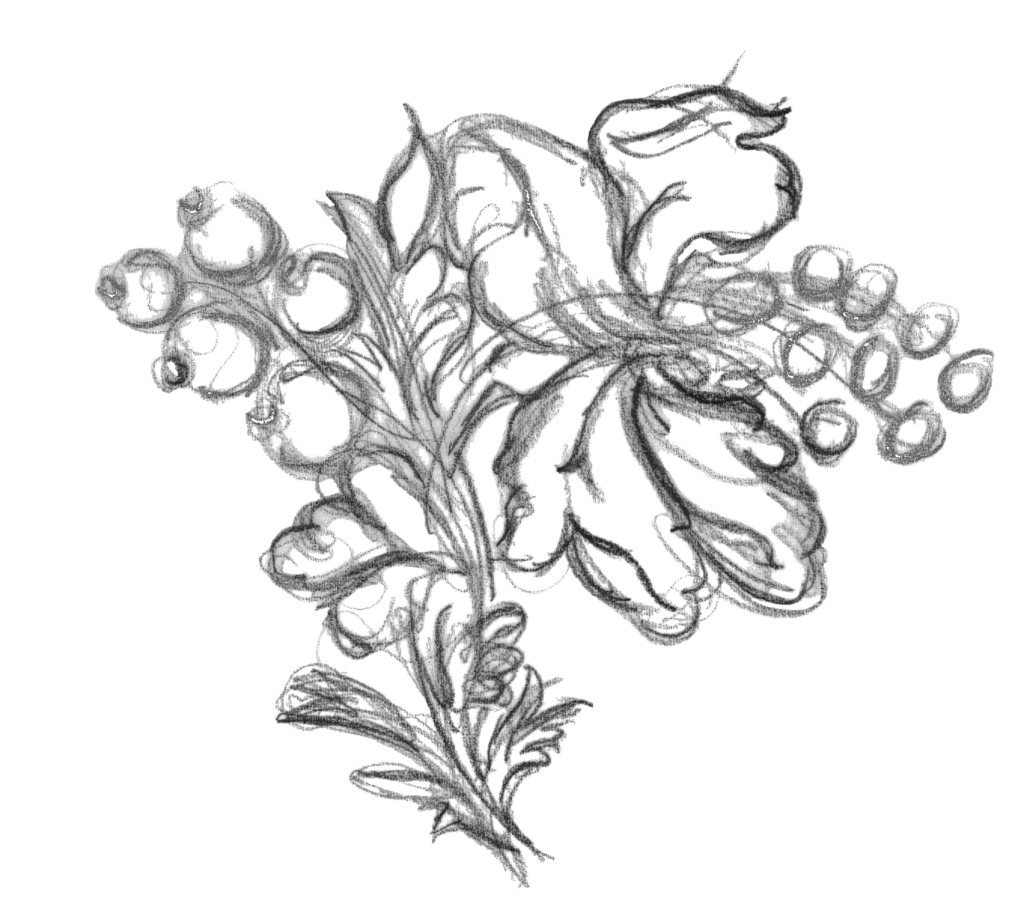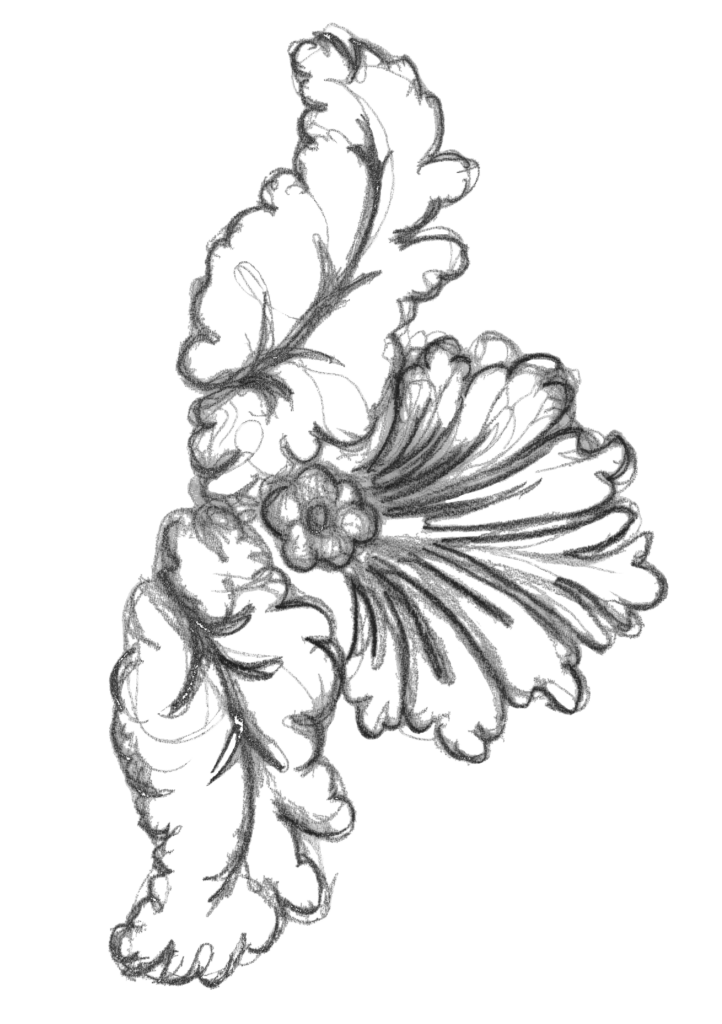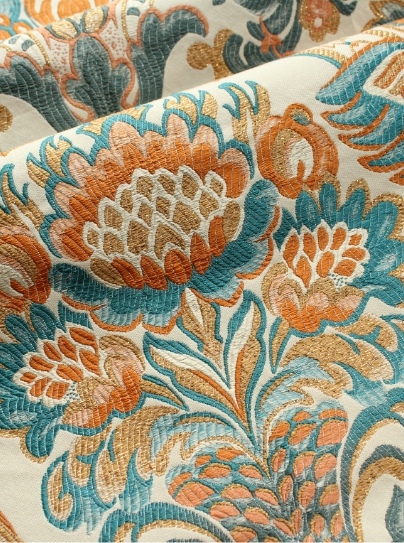2018 marks 300 years since the birth of Thomas Chippendale, he became a cabinet-maker in London, designing furniture in the mid-Georgian, English Rococo, and Neoclassical styles. His legacy and talent is on display at many of our great houses and museums, a number of which are holding their own ‘Chippendale 300’ celebrations of this special tercentenary.
Thomas Chippendale himself was not renowned as a fabric man and is not known to have designed or produced his own textiles for use on his furniture and in his schemes. The documented textile evidence and research suggests that he purchased rich silk damasks in a range opulent period colours to best showcase his own design talents and craftsmanship. Humphries Weaving have had the pleasure of being involved in a number of Thomas Chippendale restorations and we outline some of the major projects in this article;
Dumfries House, Ayrshire, Scotland
Probably Thomas Chippendale’s most famous and complete collection of furniture. In 2007 Dumfries House was saved for the nation, headed by the efforts of HRH Prince Charles to ensure that the collection remained in tact and accessible to the public.
The Family Bedroom and The Blue Drawing Room
The house inventory describes the family bed as originally hung with “18 yards of green silk and worsted damask.” Remaining fragments of what was thought to be this original fabric were discovered on a chair in the house and although an alternative colour was selected for the restoration, the original design was carefully pieced together and redrawn by Humphries Weaving. Once identified it became clear that the same design also existed in our own archive.
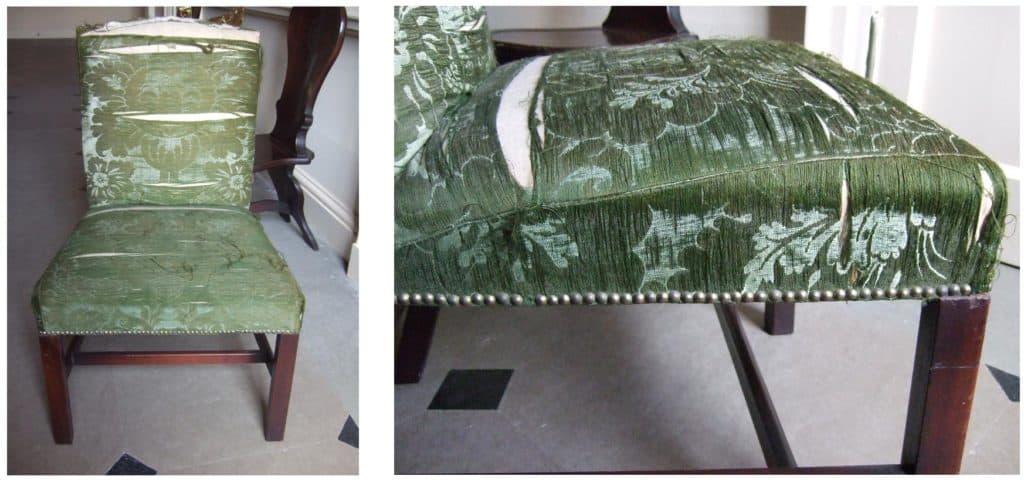
Pictured above is the chair that revealed the original design, now known in the Humphries Weaving archive as ‘The Ayreshire’
The striking blue damask was used to restore the family Bedchamber along with furniture and curtains in the Blue Drawing Room, Humphries weaving supplied 180 metres of narrow width pure silk damask.
The Family Parlour
The same design was also selected for the restoration of furniture and festoon curtains in the Family Parlour but this time in a rich sunny historic yellow, researched by renowned textile historian Annabel Westman. Humphries Weaving provided 144 metres of pure silk damask for the restoration.
Alnwick Castle, Northumberland, England
Another unique collection and thought to be the largest collection of Chippendale chairs are the set of 32 dining chairs in the State Dining Room at Alnwick Castle. The forest green colour was matched to a fragment found in the castle and the design used was from the 19th Century and attributed to the house. The same pure silk was used on the walling and Humphries Weaving supplied 600 metres of narrow width design for the full restoration.
Harewood House, Yorkshire
The bed supplied in 1773 by Chippendale cost £250. The three mattresses, bolsters, linen and decorative fringes cost another £150, which makes it one of the most expensive pieces of furniture ever supplied by Chippendale.
The design at Harewood House is, to date, not found anywhere else and is completely unique to the house. It was redrawn by the Humphries Weaving studio from the remaining fragments of the inner lining of the bed dome. However, a small section of the design was missing and the drawing had to be completed by invention, in line with the style of the rest of the pattern.
Then, whilst Richard was visiting Natalie Rothstein of the V&A, regarding a separate project, he talked through his dilemma and Natalie swiftly produced a fragment of cloth that had been sent to her years earlier direct from Harewood House. To their astonishment the single piece contained the missing floral motif. The design was altered back at the studio and the full pattern was completed in all of its glory with Humphries Weaving suppyling 600 metres of pure silk narrow design damask.
Bolling Hall, Bradford
The Couch Bed can be found at Bolling Hall. The bed hangings have been restored with pure silk, crimson Damask which can also be found on the walls. Interestingly, the Chippendale Couch Bed was originally found at Harewood House but later sold to Bolling hall.
Nostell Priory, West Yorkshire
Robert Adam appointed Thomas Chippendale to decorate the interiors of Nostell Priory and much of his original furniture designs made specifically for the house remain in place today. Unfortunately the fire of 1980 spread to The Crimson Room and Humphries Weaving was asked to re-weave brown/red pure silk damask for the bed drapes, furniture upholstery and festoon curtains.
Museum of Fine Arts, Houston, USA
The piece in The Museum of Fine Arts, Houston collection is part of a suite made for Sir Lawrence Dundas for his London home, Number 19 Arlington Street. The suite was originally comprised of four sofas and eight armchairs. Three sofas and four chairs were retained within the Dundas descendant line when items from Arlington Street were sold in the Christie’s sale of 1934. The suite is the only known documented example of a Robert Adam design carried out by Thomas Chippendale.
The sofa is of a gilt limewood, pine and beech construction and Humphries Weaving were commissioned to weave a pure silk fabric in an appropriate narrow width mid-18th century pattern for the re-upholstery. Original 18th Century threads were found on the carcass of the sofa which underwent colour analysis to verify the shade of red.
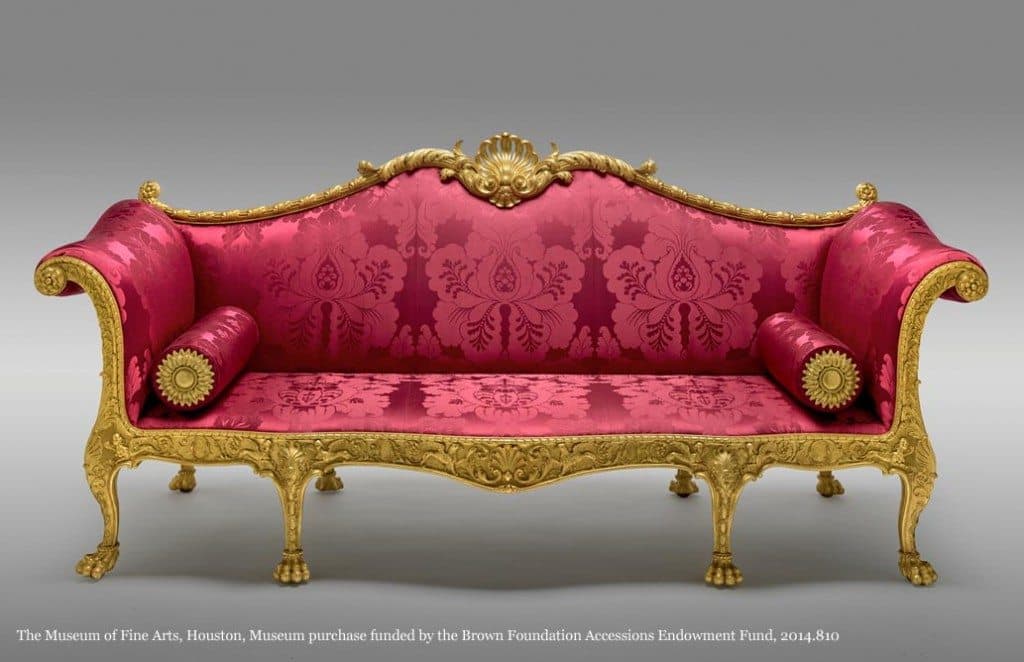
You can learn more about this landmark anniversary and look for events held at some of the properties mentioned above by clicking on: Chippendale 300
